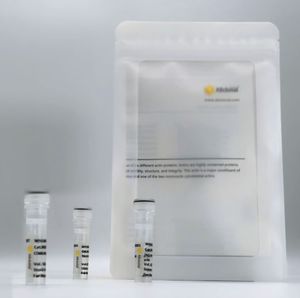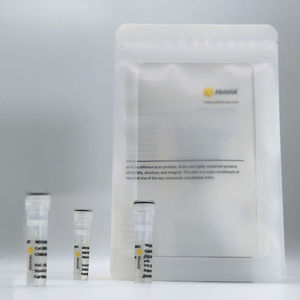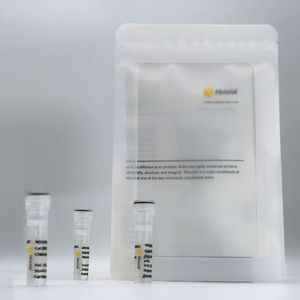
- Laboratory
- Laboratory medicine
- Monoclonal antibody
- ABclonal Technology

- Company
- Products
- Catalogs
- News & Trends
- Exhibitions
Monoclonal antibody A19524for Western blotimmunohistochemistryfor immunofluorescence
Add to favorites
Compare this product
fo_shop_gate_exact_title
Characteristics
- Type
- monoclonal antibody
- Applications
- for Western blot, immunohistochemistry, for immunofluorescence
Description
The nuclear lamina consists of a two-dimensional matrix of proteins located next to the inner nuclear membrane. The lamin family of proteins make up the matrix and are highly conserved in evolution. During mitosis, the lamina matrix is reversibly disassembled as the lamin proteins are phosphorylated. Lamin proteins are thought to be involved in nuclear stability, chromatin structure and gene expression. Vertebrate lamins consist of two types, A and B. Alternative splicing results in multiple transcript variants. Mutations in this gene lead to several diseases: Emery-Dreifuss muscular dystrophy, familial partial lipodystrophy, limb girdle muscular dystrophy, dilated cardiomyopathy, Charcot-Marie-Tooth disease, and Hutchinson-Gilford progeria syndrome.
Immunogen information
Immunogen - Recombinant fusion protein containing a sequence corresponding to amino acids 403-572 of human Lamin A/C (NP_733821.1).
Gene ID - 4000
Swiss prot - P02545
Calculated MW - 74kDa
Observed MW - 68KDa/72KDa
Applications
Recommended dilution -
WB 1:10000 - 1:600000
IHC-P 1:50 - 1:400
IF/ICC 1:50 - 1:200
IP 1:10000 - 1:120000
Storage buffer - Store at -20℃. Avoid freeze / thaw cycles.
Buffer: PBS with 0.01% thiomersal, 0.05% BSA, 50% glycerol, pH7.3.
Application key - Western blotting Immunohistochemistry Immunofluorescence Immunoprecipitation
Positive samples - HeLa, A-549, NIH/3T3, PC-12
Cellular location - Nucleus, Nucleus envelope, Nucleus lamina, Nucleus speckle, nucleoplasm
Customer validation -
(Caenorhabditis Elegans)
WB(Mus musculus)
IF(Homo sapiens)
WB(Homo sapiens)
Western Blot(Mus musculus)
Catalogs
No catalogs are available for this product.
See all of ABclonal Technology‘s catalogsRelated Searches
- Assay kit
- Solution reagent kit
- Blood assay kit
- Molecular biology reagent kit
- Serum assay kit
- Immunoassay assay kit
- Plasma assay kit
- Research reagent kit
- Diagnostic reagent kit
- Laboratory reagent kit
- Protein reagent kit
- Enzyme reagent kit
- Reagent medium reagent kit
- Immunology reagent
- Dye reagent
- Cytology reagent kit
- ELISA assay kit
- Buffer solution reagent kit
- Antibody
- Research assay kit
*Prices are pre-tax. They exclude delivery charges and customs duties and do not include additional charges for installation or activation options. Prices are indicative only and may vary by country, with changes to the cost of raw materials and exchange rates.




